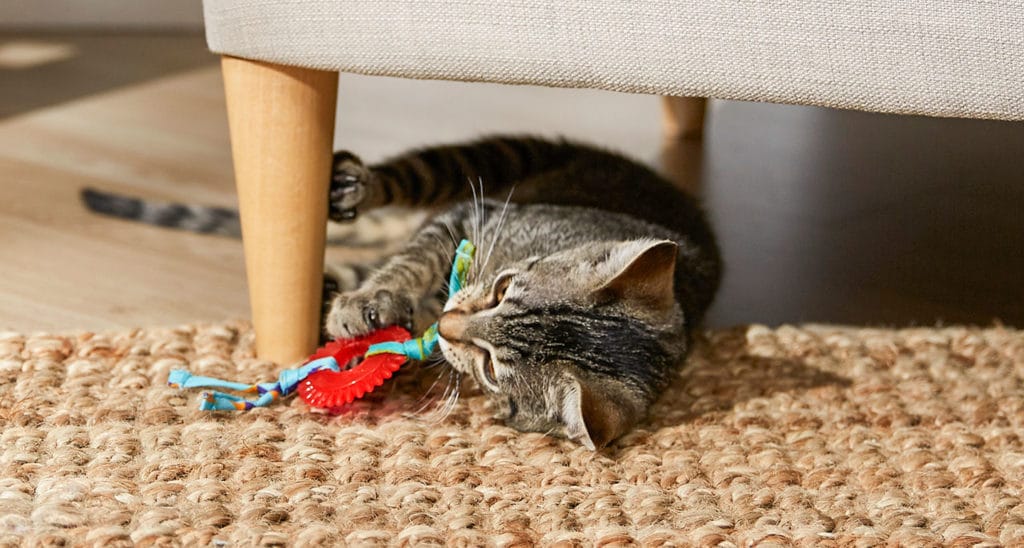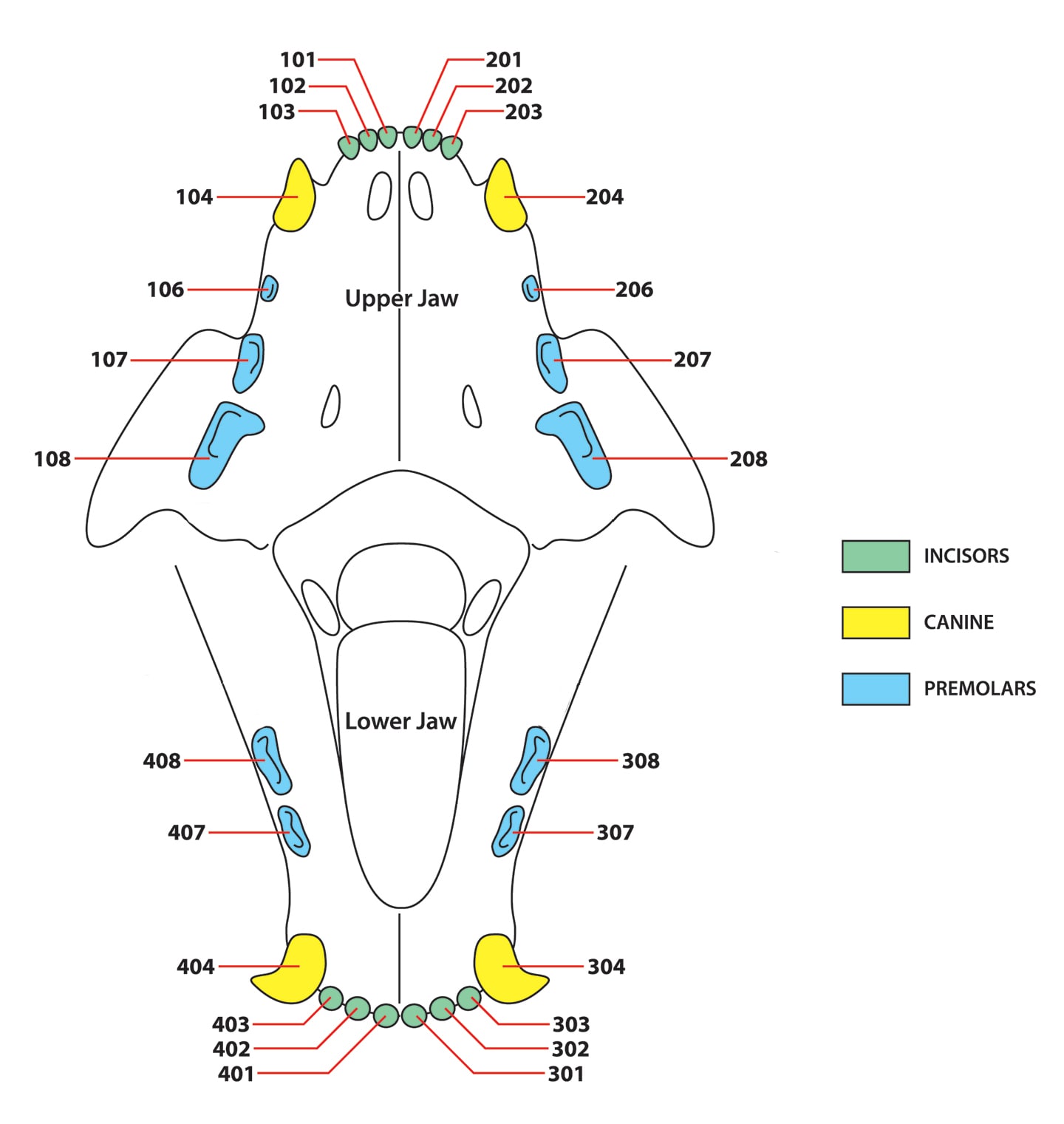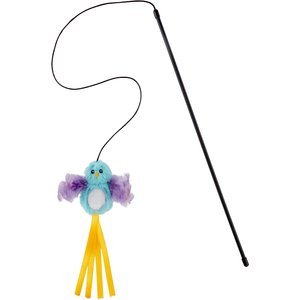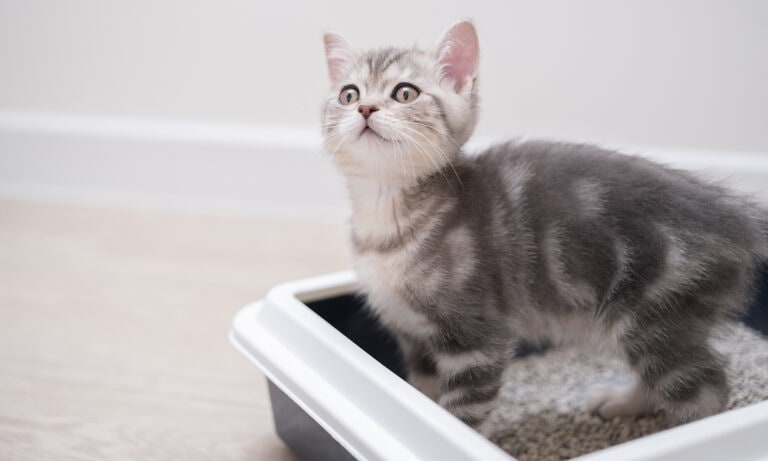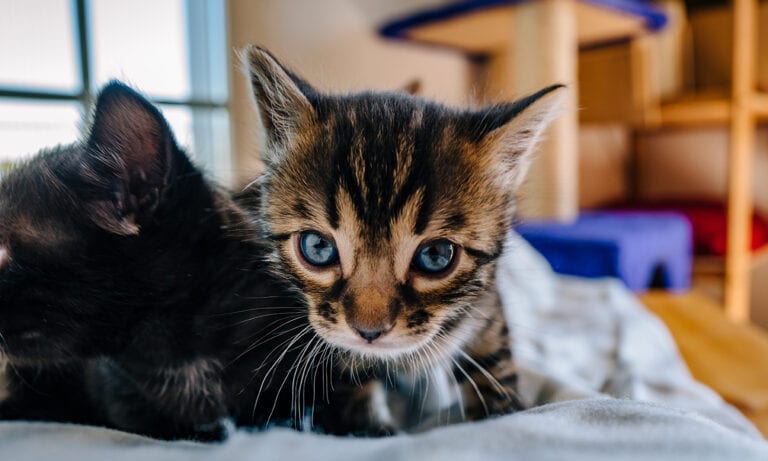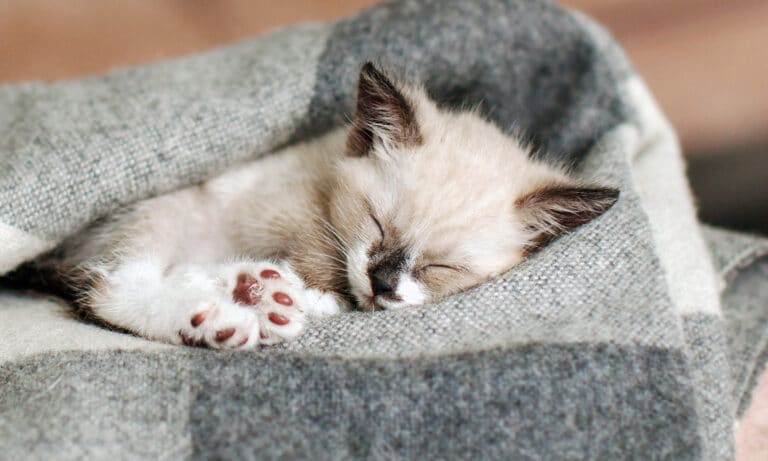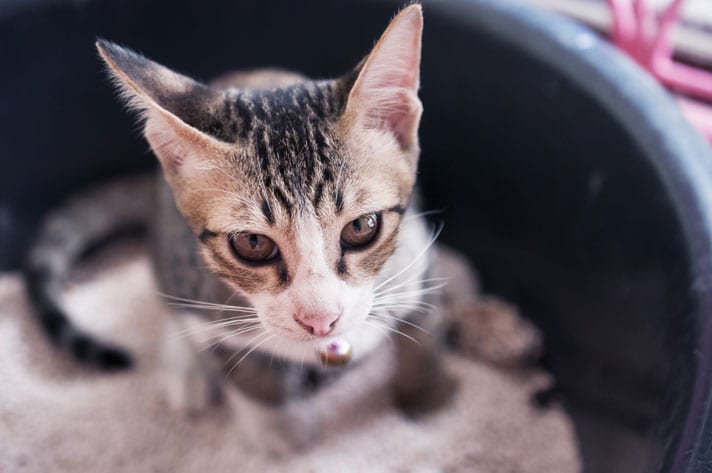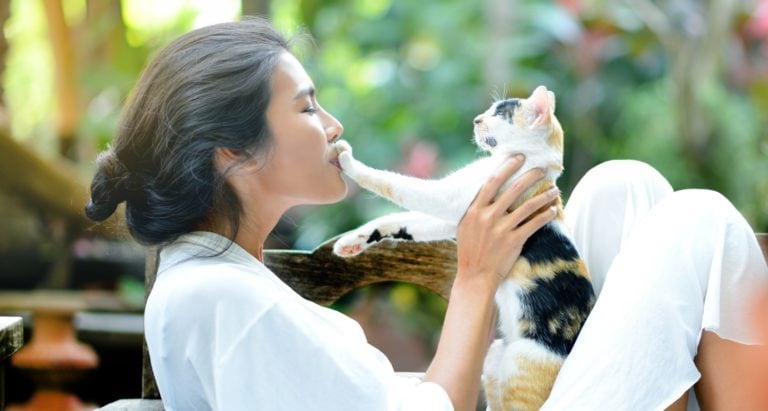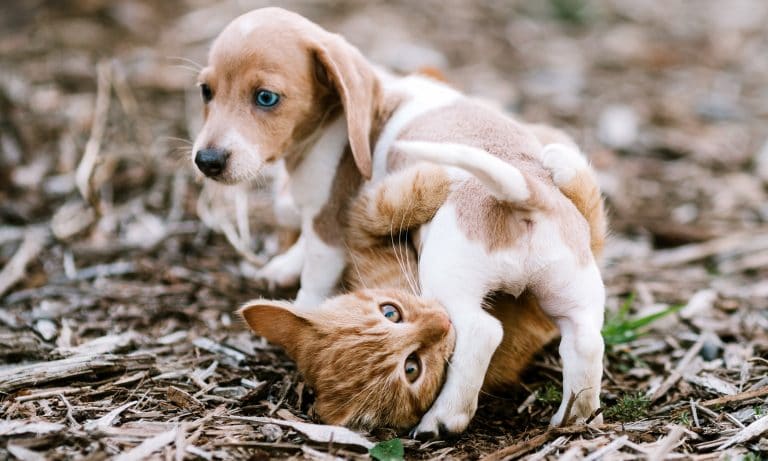Like human babies, kittens are born without teeth and must go through the teething process. Cat teething is much more accelerated than human teething, though, and it begins quite young.
Our tiny, fluffy feline friends are energetic, playful and generally happy, but it’s helpful to remember that teething kittens may experience some discomfort and exhibit distinct behaviors. Cat parents can stay on top of the process with our comprehensive guide to kitten teething, which covers everything from when kittens get and lose their baby teeth to how to provide relief with appropriate kitten teething toys.
Click to jump to each section:
Kitten Teething Timeline
When do kittens teethe? The teething process takes place when kittens are very young. See the following chart for a timeline.
Kitten Teething Age Chart
Birth to 2 weeks of age
Kittens have no teeth
2-4 weeks of age
Baby incisors come in
3-4 weeks of age
Baby canines come in
4-6 weeks of age
Baby premolars come in
By 8 weeks of age
Kittens have all 26 of their baby teeth
3.5-4 months of age
Baby incisors begin to fall out; adult incisors begin to come in
4-5 months of age
Baby canines and premolars begin to fall out; adult canines, premolars and molars begin to come in
By 5-7 months of age
Kittens have all 30 of their adult teeth
When Do Kittens Get Teeth?
Kittens are born without visible teeth. They rely on their mother’s milk, so they don’t need teeth quite yet. Their deciduous teeth remain below the gumline until around 2 weeks of age, when the kitten teething process begins.
A kitten’s baby teeth appear in the following order:
- Incisors come in between 2 and 4 weeks of age.
- Canines come in between 3 and 4 weeks of age.
- Premolars come in between 4 and 6 weeks of age.
Most people who become parents to kittens don’t welcome their feline friend to the family until they’re around 8-12 weeks old.
However, if you foster newborn or very young kittens, you’ll witness the baby teething process, says Dr. Deb M. Eldredge, DVM, a New York-based veterinarian who retired from clinical practice and is the technical editor of Cornell DogWatch.
By the time your kitten is 8 weeks old, they will have all 26 of their kitten teeth. That means that if your kitten joins your family at a typical age, they’ll already have their full set of baby teeth.
When Do Kittens Lose Their Teeth?
At around 3-3.5 months of age, kittens begin to lose their baby teeth, says Dr. Eldredge. Those are replaced with adult teeth. She says you’ll begin to see "true" kitten teething problems when they begin losing their baby teeth, also known as milk teeth or deciduous teeth.
You can expect your kitten to lose their baby teeth until they’re about 5 months old. They’ll then be replaced by adult teeth.
Kitten Teeth Chart
Dr. Sabrina Kong, DVM, a vet at a small animal clinic in Northern California and a veterinary consultant for We Love Doodles, explains the three types of kitten teeth:
- Incisors: Kittens will have 12 incisors, six on the top and six on the bottom. Incisors are used for biting and cutting food.
- Canines: Kittens will have four canines, two on the top and two on the bottom. Canine teeth are used for gripping and tearing food.
- Premolars: Kittens will have 10 premolars, six on the top and four on the bottom. Premolars are used for chewing and grinding food.
Kitten Teething Symptoms
Typical kitten teething symptoms include the following:
- Chewing: People tend to think of puppies engaging in excessive chewing when they’re teething, but the same can be true of kittens. As new teeth appear, kittens tend to chew. Dr. Eldredge says electrical cords are a favorite chew item. The soft plastic or rubber coating appeals to a small feline with a sore mouth. Cover such electrical cords or tape them up for safety.
- Slight bleeding: Don’t panic if you see your kitten’s mouth bleeding a little bit. If you notice blood, it should be only a small amount, and the bleeding will stop on its own, Dr. Eldredge says.
- Pawing at their face: Your kitty may paw or rub at their face if they’re experiencing teething pain.
Most kittens breeze through teething, but a few will have some discomfort. Here are some signs of kitten teething trouble, according to Dr. Eldredge:
- Change in appetite: If you notice your kitten chewing more slowly or being reluctant to eat their kibble, check their gums for any swelling or redness. Gums can be tender when the new adult tooth is about to erupt. Give them soft food by adding a little warm water to their kibble or substitute in more canned food.
- Reluctant during playtime: A kitten who normally grabs at cat toys or pounces on toys and then shakes them in their mouth may be hesitant to engage in playtime because of the sore mouth. Stop any play that seems to hurt them.
- More frequent meows: You may notice your kitten meowing more frequently, possibly with a plaintive air. That can be due to the pain of the new teeth coming in.
- Heavy drooling: Some kittens will also drool when teething. Always check their mouth carefully if your kitten is drooling They could have something stuck in their teeth or have an injury to their mouth and not just be drooling from teething.
- Retained teeth: Sometimes, a kitten may retain a deciduous tooth and wind up with two teeth—a baby tooth and an adult tooth—in one tooth’s spot. If this happens, see your veterinarian for help. A lingering baby tooth can cause problems with the permanent tooth.
How To Help a Teething Kitten
Pet parents who feel their kitten’s teething pain secondhand and want to offer their feline friend some relief can help their teething kitten with specific items.
Cat Teething Toys
Purchase teething toys for your kitten. Many teething rings and toys for kittens are made of soft plastic or rubber. Only give these to your kitten when you are there to supervise, as their sharp, little teeth may break off small pieces that could be swallowed.
Interactive Toys
You can purchase interactive toys, like feather wands and battery-operated spinner toys for your teething kitten, suggests Dr. Donnell Hansen, DVM, DAVDC, who practices at BluePearl Pet Hospital in Arden Hills, Minnesota.
“You want to keep their mind and body occupied,” she says. “Cat-safe grasses are a great option, as is letting them play with toys that move and jingle while you supervise them. Whatever you can do to keep them out of mischief.”
Make Your Own Cat Teething Pacifier
Dr. Eldredge recommends a makeshift “kitten pacifier” that your kitten can suck on. Here’s how:
- Cut off a piece of a washcloth that’s at least 4-by-4 inches. It should be bigger than your kitten’s mouth can carry because you don’t want them to inadvertently swallow it.
- Soak in low-sodium chicken broth or juice from a can of tuna packed in water.
- Freeze it!
“Not only will your kitten enjoy this, but your other, older cats may want one, too!” Dr. Eldredge says.
To avoid creating a germ trap, either toss the homemade pacifier in the washing machine on the hot cycle or throw it in the trash and replace it with a new one after each use.
Make Your Own Leather Teething Toy
You can also make your own kitten teething toy out of leather. If you go this route, just like with the homemade washcloth pacifier, Dr. Eldredge recommends you provide your pal with a leather square that’s bigger than their mouth can carry—at least 4-by-4 inches. Don’t create anything smaller because your kitten could swallow it.
Do not let them chew on leather shoelaces, as they could swallow pieces they chew off, and keep your leather shoes safely stored away in a closet.
Kitten Dental Health Tips
Build Healthy Dental Habits Early On
While the teething period is not a good time to start brushing your cat's teeth, you can start establishing a good oral hygiene early on by letting your kitten lick a little pet toothpaste off your finger, Dr. Eldredge says. Once their adult teeth come in, build up to brushing their teeth daily.
When brushing your cat’s teeth, use a kitten-sized toothbrush and pet-safe toothpaste, like those found in the Arm & Hammer kitten dental kit.
Schedule Annual Dental Checkups
Dr. Kong encourages cat parents to schedule annual dental checkups for their furry friends. Preventative health and wellness isn’t just for humans, and avoiding gingivitis and periodontal disease is an important goal.
Check Your Kitten’s Mouth for 'Double Teeth'
Check your kitten’s mouth at least weekly for any retained baby teeth and "double teeth," which is both a baby tooth and an adult tooth in the same tooth location. If you see a double tooth for more than a few days, call your veterinarian. The residual deciduous tooth may need to be pulled.
Baby teeth that remain in place can cause infection, periodontal disease or alter the eruption of the adult teeth below them, leading to a very sore gum.
Consider Cat Food Type
When it comes to kitten dental health, the type of cat food you select can make a difference. Dr. Ochoa says that dry food is better for dental health than wet food.
“The crunchy kibble helps scrape away plaque and tartar,” she explains. However, because canned food is typically recommended for cats to increase their water intake, she suggests feeding your cat a combo of both wet food and kibble. (Here's how to properly mix wet and dry food.)
Check Your Cat’s Bite
Luckily, most cats have good "bites," which means that their teeth meet in a normal overlap with the top teeth just in front of the bottom teeth, Dr. Eldredge says.
Unusual bites, such as overbites (upper jaw longer than bottom jaw) or underbites (lower jaw longer than upper jaw) that are seen in some dogs, are not as common in cats.
Still, cats with shortened faces, such as Persians, may have an "off" bite. Your veterinarian will also check your kitten’s mouth on all their "well kitten" visits.
Pay Attention to Dental Changes
Sometimes, a cat will need to have a tooth removed.
According to Dr. Kong, signs your cat may need a tooth extraction include:
- Swollen/bleeding gums
- Bad breath
- Loose teeth
- Difficulty eating
If you notice these signs, call your vet.
Expert input provided by: Dr. Deb M. Eldredge, DVM, a New York–based veterinarian who retired from clinical practice and is currently the technical editor of Cornell DogWatch; Dr. Sabrina Kong, DVM, a vet at a small animal clinic in Northern California and a veterinary consultant for We Love Doodles; and Dr. Donnell Hansen, DVM, DAVDC, who practices at BluePearl Pet Hospital in Arden Hills, Minnesota.
Additional reporting by Wendy Bedwell Wilson.
More about kitten teeth:
Share:
